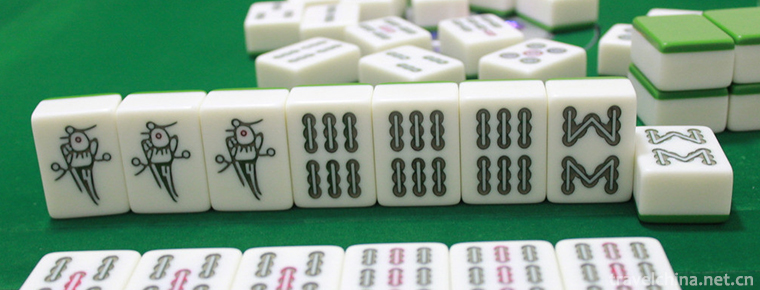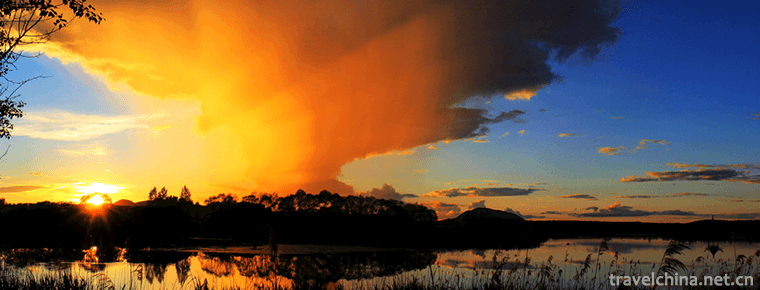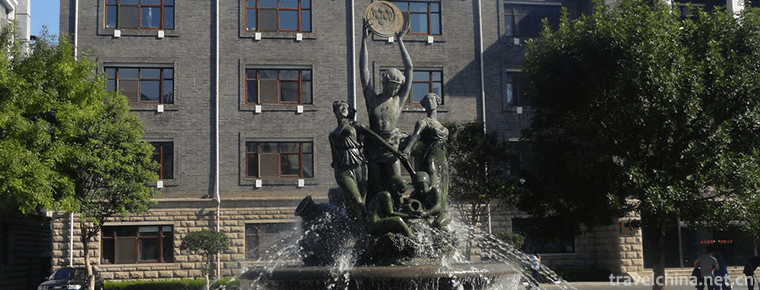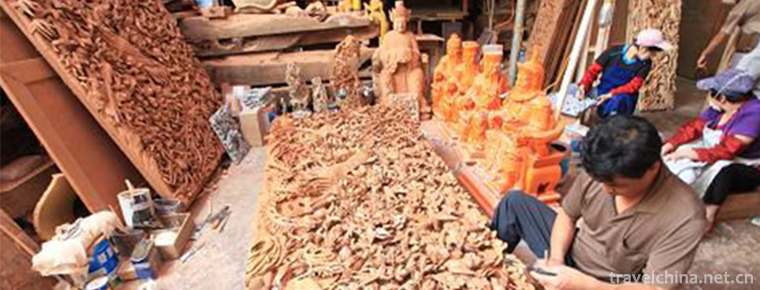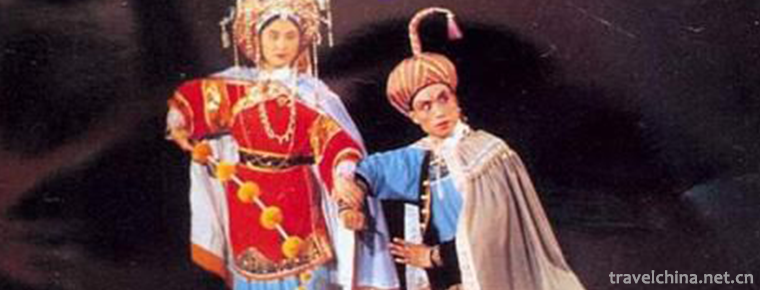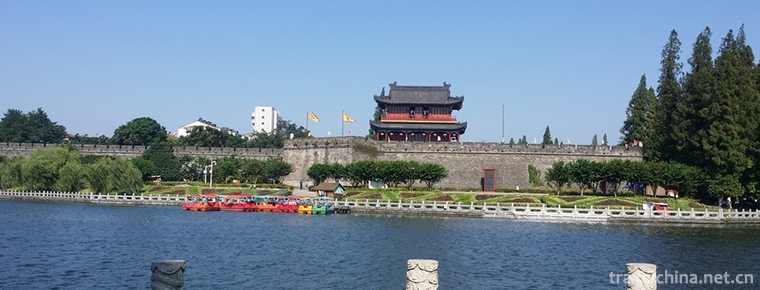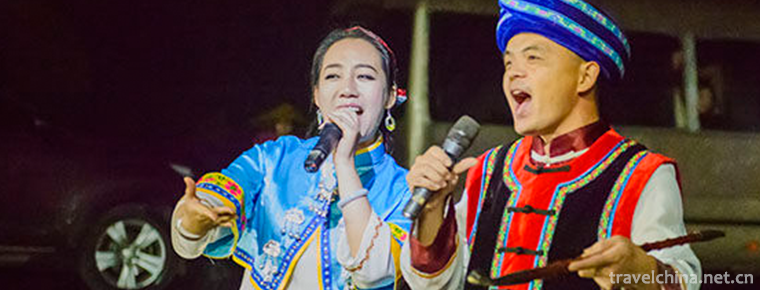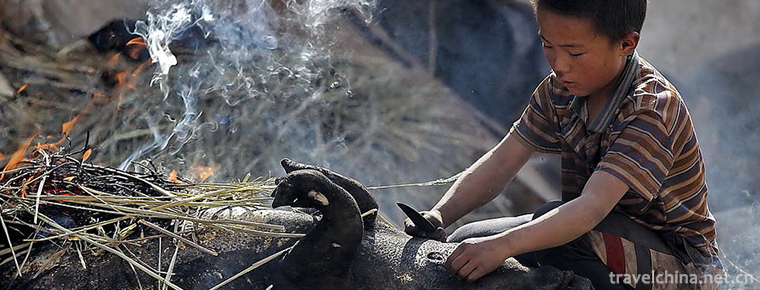Feng Guo Temple
Feng Guo Temple
Fengguo Temple is located in Yixian County, Jinzhou City, Liaoning Province, China. It was founded in the ninth year of Kaitai, Liaoning Province (1020). It was first named Xianxi Temple and later changed its name to Fengguo Temple. Fengguo Temple covers an area of 60,000 square meters.
The period of Liao, Jin and Yuan Dynasty was the heyday of Fengguo Temple, and only Daxiong Palace existed in Ming and Qing Dynasties. In Qing Dynasty, hexagonal bell pavilion, four-cornered stele pavilion, infinite palace, archway, Xiaoshanmen and Western Palace Zen Hall were built. Fengguo Temple is one of the three existing monasteries of Liao Dynasty in China. Its landmark ancient building, Daxiong Hall, is the largest Buddhist temple in ancient times. It contains the oldest and largest clay sculpture coloured Buddha statues in the world.
The main building in Fengguo Temple is the Grand Hall and the whole temple, which is the most typical example of the temples in Liao and Jin Dynasties. It is the best legacy of the Tang Dynasty and the layout of the temples in Xia Qi, Liao and Jin Dynasties. Among them, Daxiong Hall is the highest achievement of Buddhist architecture in Liao Dynasty, representing the highest level of Chinese architecture in the Eleventh century.
In 1961, it was announced by the State Council of the People's Republic of China as the first batch of national key cultural relics protection units. In 2009, it was awarded AAAA class tourist attraction by China National Tourism Administration.
Temple evaluation
Liang Sicheng, an architect, once published an academic report, describing the Liao Dynasty monasteries as "the national treasure of the millennium, the supreme national treasure and the rare treasure". Fengguo Temple is the largest Buddhist temple in Liao Dynasty.
Du Xianzhou, an expert on cultural relics, praised in his investigation report that "the wooden structure of the Grand Hall of Fengguo Temple, which is still straight and vigorous for thousands of years, is a brilliant achievement in the history of Chinese architecture. The statues of the seven Buddhas in Liao Dynasty are tall and solemn, balanced, elegant and handsome, with a kind and magnificent manner. The flying sky on the girder rack is full of beauty and pleasure, and the color is bright and gorgeous. It is a rare example of architectural color painting in Liao Dynasty in China.
Yang Renkai, a connoisseur and cultural relic expert, commented on the Liao Dynasty paintings in the book "Chinese Calligraphy and Painting" and pointed out that "the paintings on the girders of the Grand Hall of Fengguo Temple are still well preserved and brilliant, among which the flying sky shape is excellent and the Tang Dynasty landmarks are still rare."
Yang Lie, a professor-level senior engineer of ancient architecture of the State Administration of Cultural Relics, who has presided over the maintenance project of Fengguo Temple, once appraised the Grand Hall of Fengguo Temple as "the largest and most complete single-eaved four-apron wooden building preserved in ancient Liao (Song) Dynasty of China, and the largest magnificent hall in China."
Cao Xun, a historian of ancient architecture, said, "Nine halls are the limit of Buddhist architecture. Nine halls of seven Buddhist temples in Fengguo Temple, thousands of ancient temples in the whole country, and the Grand Hall of Fengguo Temple are extremely magnificent."
Zhou Decang, a scholar, published an article highly praised Fengguo Temple: "In a long historical period, Northeast China was not the center of Chinese culture, but Fengguo Temple, with its outstanding characteristics and perfect remains, made the splendid Chinese culture show to the world through the art forms of architecture, sculpture, painting and so on."
Temple legend
Legend has it that the seven great Buddhas worshipped in the Great Buddha Temple were originally seven sisters. They are all beautiful, kind-hearted and skillful. Their mother-in-law is ill, they serve before and after, take soup and feed medicine; their father-in-law clothes in the West are broken, and they wash and mend with pulp; even when begging for food, they have to treat each other with tea and rice, and when they leave, they have to send some food and clothes to wrap around. Local people call them seven fairies. When they mention them, they have no thumbs up.
One day, Seven Sisters went to the river to wash clothes for an old husband. They suddenly saw an old man with a white beard falling in the daytime with a light breeze. Seven sisters were wondering. They only heard the old man say, "I am the envoy of the Jade Emperor. The Jade Emperor and the gods of all walks were moved by the good deeds of your seven sisters and decided to accept you as Buddhas. Tomorrow at noon, when the drum sounds, you will become Buddhas." When the old man finished, he disappeared. Seven sisters heard it with their own ears and saw it with their own eyes. They knew they were not dreaming. They told six sisters about it when they returned. Six sisters listened and knew that they would never be able to do things for the villagers themselves. So, that night, the seven sisters stayed up all night and made many shoes, socks and pants for the villagers. They did not distribute the finished goods to the families until dawn.
When it's finished, the seven sisters will see if it's too early. Get dressed quickly. Just then, at about noon, I saw dark clouds rolling in the Northwest sky, thunder bursts louder than a burst. At noon, the sky drum sounded, and all six sisters had returned to their seats. Only seven sisters, because patronage helped sisters dress up, just half of the clothes, the Jade Emperor harvested them together into Buddha. In the Great Buddha Temple, we can also see a Buddha statue in half clothes, which is the legendary Seven Sisters, and the other six are her sisters.
Travel Tips
position
No. 18 East Street, Yixian County, Jinzhou City, Liaoning Province.
Admission ticket
50 yuan per person (March 2015).
Favoured policy
1. Children under 6 years of age or under 1.3 meters of height are exempted from tickets; children under 7-18 years of age, full-time undergraduate students and students with bachelor's degree or less are half-votes.
2. Persons with disabilities are exempted from tickets with disability certificates.
3. Elderly people over 70 years old are exempted from tickets with an old age certificate.
4. Active servicemen shall hold officer's certificates and soldier's certificates and be exempted from tickets.
traffic
Fengguosi is 1.5 kilometers away from Yixian Railway Station, 1 kilometer away from Yixian Long-distance Passenger Station and 2 kilometers away from Jinzhou-Fuxin Expressway Station.
Jinzhou-Yixian 45 km (east via G102 National Highway, from Shuangyang Station to Shangjin-Fujian Expressway to Yixian Station; north by Jinzhou-Fujian Highway S204 Provincial Highway); journey time is about 40 minutes.
Bijiashan Scenic Area - Yixian 85 kilometers (take Beijing-Shenzhen Expressway eastbound, turn Jinfu Expressway to Yixian Station), travel time is about 50 minutes.
Huludao-Yixian 100km (east of Beijing-Shenzhen Expressway, turn Jinfu Expressway to Yixian Station), the journey time is about 60 minutes.
Xingcheng-Yixian 120 km (east of Beijing-Shenzhen Expressway, turn Jinfu Expressway to Yixian Station), the journey time is about 80 minutes.
Fuxin-Yixian 70 kilometers (from Jinfu Expressway to Yixian Station or from S204 Provincial Highway of Jinfu Highway), the journey time is about 40 minutes.
Chaoyang-Yixian 90 km (take Anyang S307 Provincial Road to Yixian; or Jinchao Expressway to Beijing-Shenzhen Expressway to the east, Jinfu Expressway to Yixian Station), the journey time is about 80 minutes.
Beining-Yixian 60 kilometers (take G102 National Road to the south, turn to Anyang S307 Provincial Road to the west, through Luoluobao, Qianmaling to Yixian), the journey time is about 60 minutes.
Opening Hours
8:00-16:30.
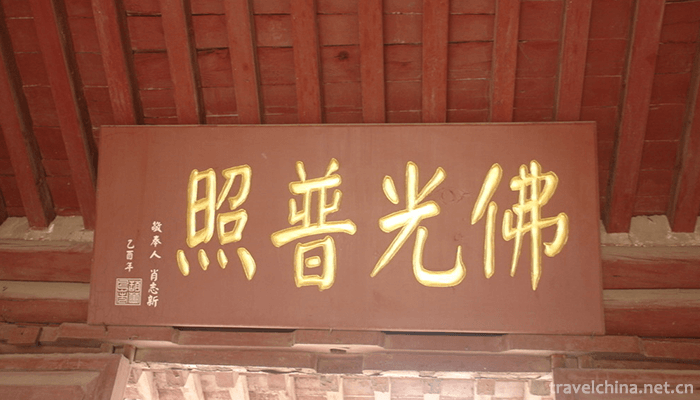
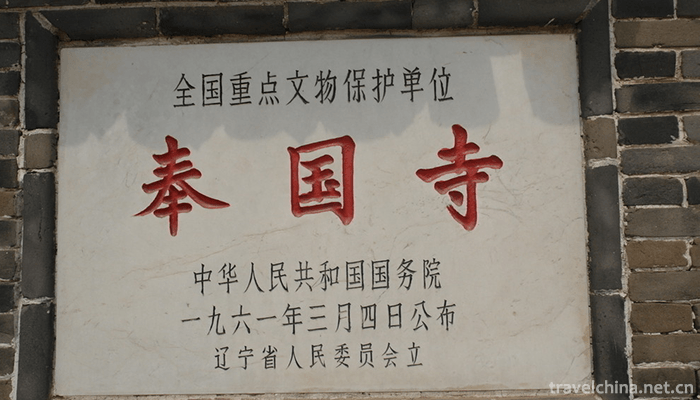
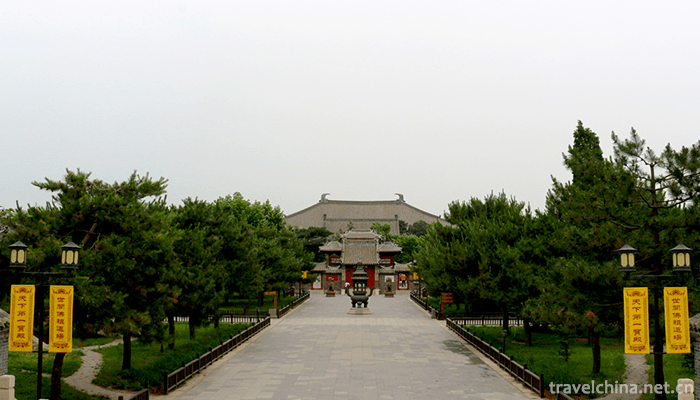
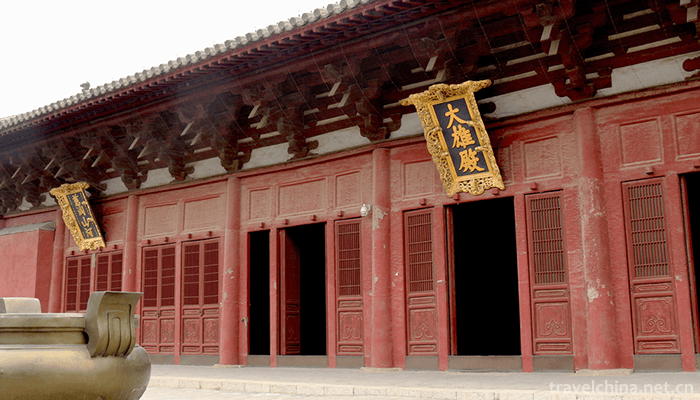
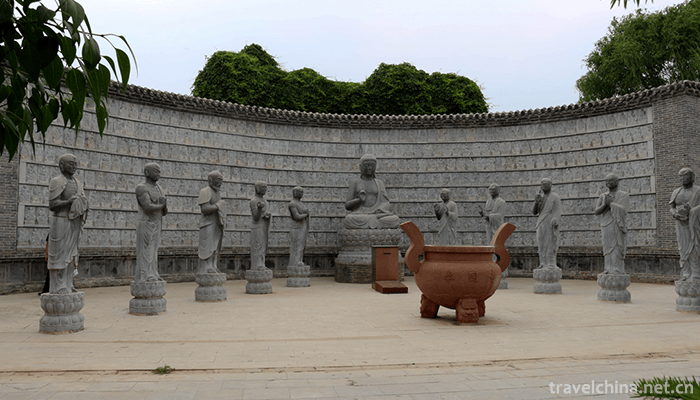
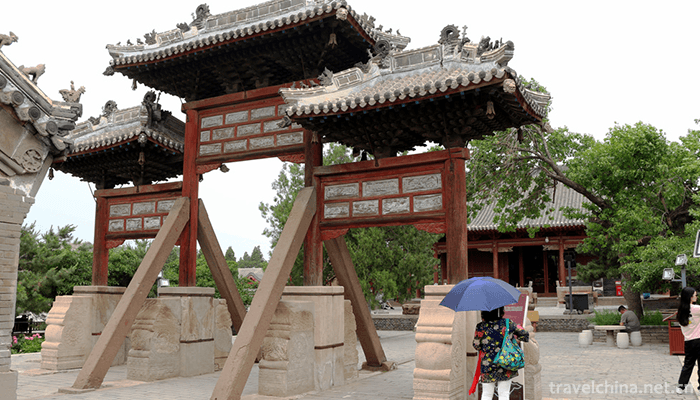

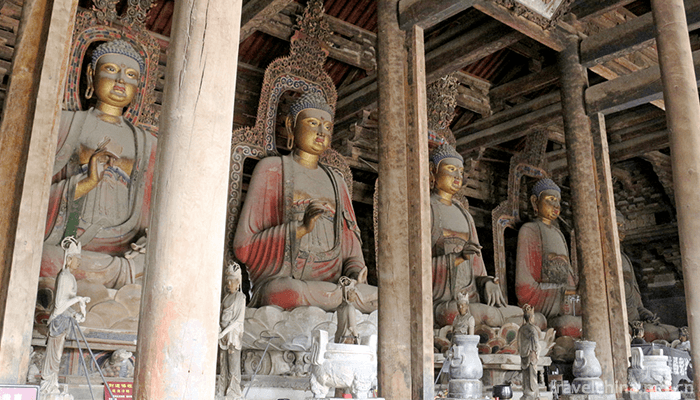
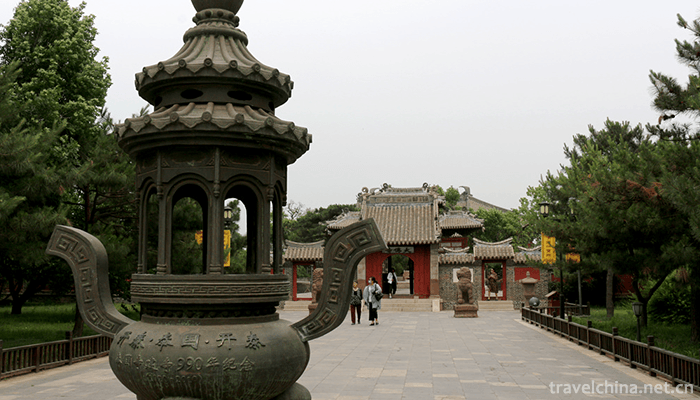
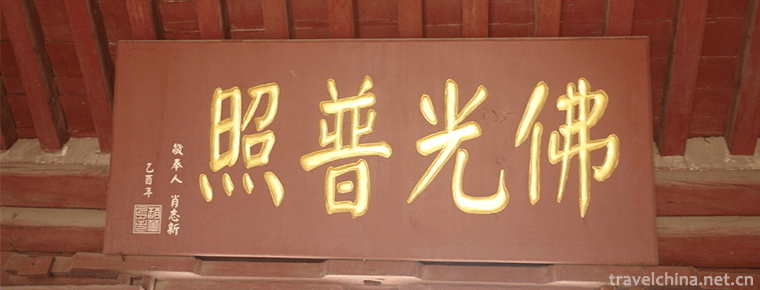
Feng Guo Temple
-
Lake Manasarovar
Ma Pang yongcuo is 35 kilometers east of the town of Pu Lan county
Views: 194 Time 2018-10-12 -
Mahjong
Mahjong, originated in China, is commonly known as Sparrow in Guangdong, Hong Kong and Macao. It is a game invented by the ancients of China,
Views: 193 Time 2018-11-13 -
The Wudalianchi Scenic Area
Wudalianchi Scenic Spot: National AAAAA Scenic Spot, World Geological Park, World Human and Biosphere Reserve, International Green List
Views: 207 Time 2018-12-05 -
Anbang River National Wetland Park
Anbang River National Wetland Park is built on the basis of Anbang River Provincial Wetland Nature Reserve, which is located in Shuangyashan City, Heilongjiang Province
Views: 164 Time 2019-01-02 -
Zhangyu Wine Culture Museum
Zhangyu Liquor Culture Museum is one of the few professional museums in the world wine industry. It is located at the original site of Zhangyu Company, Da Ma Lu, Zhifu District, Yantai City, Shandong
Views: 190 Time 2019-03-17 -
Changli folk songs
Changli folk song is a kind of local folk ditty inherited from generation to generation by Changli people. The content of singing can be divided into four categories: labor chant, story and legend, lo
Views: 237 Time 2019-04-15 -
Wood carving
Wood sculpture is a kind of sculpture, which is often called "folk craft" in our country. Wood carving can be divided into three categories: solid round carving, root carving and relief carv
Views: 150 Time 2019-06-06 -
Guizhou opera
Guizhou Opera is one of the local operas popular in Guizhou Province. It evolved and developed from the opera Yangqin (also known as "Wenqin", "Guizhou Playing Ci")
Views: 185 Time 2019-06-10 -
Legend of the Three Kingdoms
The legend of the Three Kingdoms is a kind of folk literature which was approved by the State Council and listed in the fourth batch of national intangible cultural heritage list in 2014.
Views: 226 Time 2019-06-12 -
Xinhua Folk Song
Xinhua Folk Song is a kind of traditional folk song mainly spread in Xinhua County, Loudi City, Hunan Province. Xinhua folk song has a wide range of contents, old style, unique style, simple rhyme, ch
Views: 171 Time 2019-07-06 -
Year of the Yi Nationality
In the year of the Yi people, the Yi language is called "Kusi", "Ku" is the year of the Yi people and "Si" is the new year. It means "New Year". It is a traditi
Views: 226 Time 2019-07-12 -
Junlian karst
Junlian karst scenic area. Located in Junlian County, Yibin City. The scenic area covers 130 square kilometers. The main scenic spots include karst peak cluster, box cave, Yuanyang cave, Xianren cave, Mujing hot spring, intermittent spring, etc.
Views: 154 Time 2020-10-16

